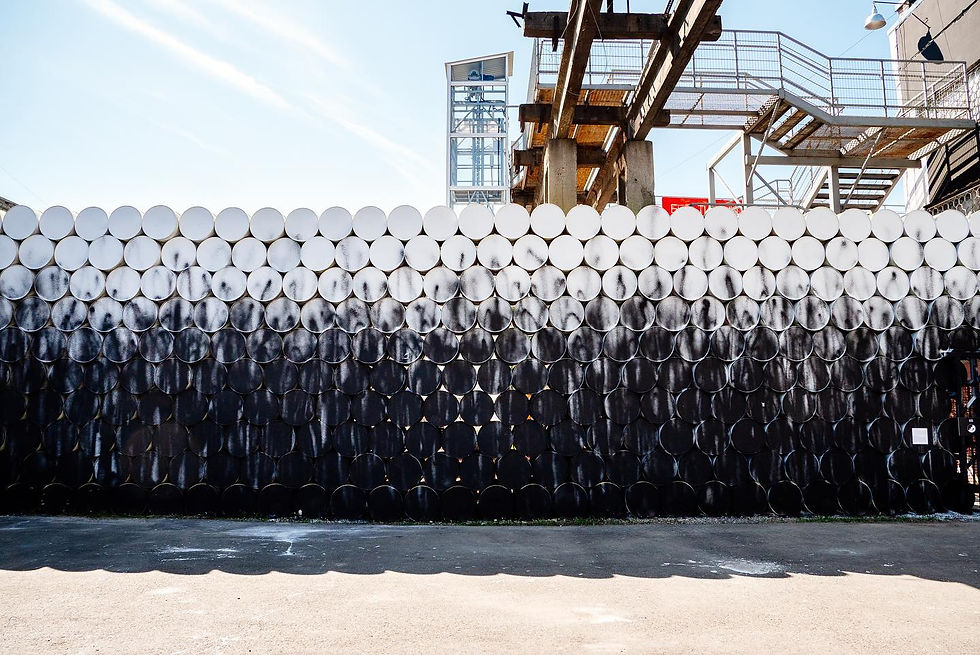And Again, Vanitas. Damien Hirst in Prada Mode
- Eva Parker

- Dec 8, 2022
- 2 min read
Updated: Dec 2, 2023

In Levenson's Quick Print, transformed into The Pharmacy by Damien Hirst, pills serve as guides to salvation, skeletons serve as reminders of mortality, and cigarette butts amidst the flowers convey the triumph of life.
Glass, veneered chipboard, painted MDF, beech, aluminium, pharmaceutical packaging, tables, office chairs, footstools, pharmacy bottles, coloured water, insect repellent, stationery, honey, and honeycombs constitute an incomplete list of elements in Damien Hirst's installation, "The Pharmacy 1992" (described on the Tate Gallery website). Notably, skeletons, Hirst's steadfast companions, also inhabit this work. In 1998, the artist transformed his Pharmacy into a restaurant in Notting Hill, later closed. The installation of the same name persists in Hirst's Newport Street Gallery. Through the Prada Mode Moscow project, The Pharmacy has journeyed to Moscow, concluding its temporary residency.
Hirst's collaboration with Prada commenced with the creation of "The Pharmacy." While Hirst was already renowned, the collaboration offered a limited edition of bags adorned with plexiglass beetles. This collaboration, blending fashion, art, and gastronomy, encapsulated l'art de vivre. After traversing Paris, London, Miami, Shanghai, and Hong Kong, Prada Mode found a home in Moscow.
The chosen venue for The Pharmacy in Moscow is the A.A. Quick Printing Partnership building on the corner of Trekhprudny and Mamonovsky. A splendid example of Art Nouveau, this historic building served as a leading Moscow printing house in the early 20th century, contributing to the literary works of Chekhov, Tsvetaeva, and Bunin. Hirst chose this location due to its historical significance and alignment with his artistic vision. Overcoming the challenge of incorporating geometric structures into an Art Nouveau space, Hirst harmonizes modern elements with the building's historical grandeur.
The mansion's marble staircase, with its curves and patterns, contrasts with geometric light boxes themed around the four natural elements. The recently restored doors and window frames engage in a visual dialogue with ascetic counters offering water and coffee. Gutenberg's bas-relief oversees masterclasses where participants, registered on Prada's website, create spin art in the style of Damien Hirst.
The Pharmacy installation immerses visitors in an environment with exaggeratedly large pills, gigantic packaging, and medicine cabinets. Tables, chairs, and visitors contribute to the living canvas, marvelling at Hirst's butterflies and celebrating bulls lost amid flowers. The wallpaper, inscribed not with medication names but chapters from the Holy Scriptures, captivates observers, transforming the path to salvation into a short and straightforward journey from 'The Destruction of Sodom' to 'Solomon in His Glory.'
Damien Hirst, known for revisiting old ideas, found renewed inspiration during the lockdown period. His exhibition "Archaeology Now" at Villa Borghese in Rome, supported by Prada, echoes his previous work "Treasures from the Wreck of the Unbelievable." Hirst's persistent exploration of medicine, portrayed as a new religion, gains added resonance amid the ongoing pandemic, where prayers are directed towards healthcare professionals. Hirst's artistic foresight, akin to Bulgakov's Master, revels in the satisfaction of accurate predictions, even if the truth of life doesn't guarantee happiness.










Comments